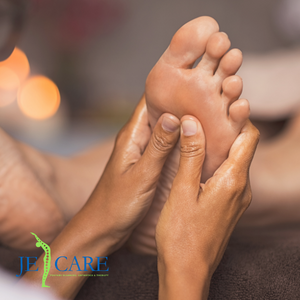
09 Jan Get Rid from Pain by Advanced Soft Tissue Therapy
Scar tissue and adhesions can develop in soft tissues, including muscles, tendons, ligaments, fascia, and nerves, either directly due to damage or accidentally due to compensation processes that have become automatic in our systems. These adhesions cause the tissue’s fibres to stick together, irritating the surrounding tissues, impairing mobility, and weakening the muscles. As a result of these altered soft tissues, joints are susceptible to abnormal strain, which can weaken joint structures and result in widespread movement impairments.

Advanced soft tissue therapy is for anyone looking for soft tissue injury treatment and deals with any soft tissue trauma caused by illness, surgery or serious injury. In contrast to conventional massage therapies, advanced soft tissue techniques, such as massage, are used during treatments to enhance the condition of soft tissues, regulate symptoms, hasten recovery, and/or increase joint range of motion.
There are limitations to their use and application for basic soft tissue therapy. Acutely injured or inflamed tissues cannot be treated with them. Deeper structures are inaccessible to them. Additionally, their effect on tissues is limited to a local mechanical one. Advanced methods can be used to get around these limitations. Chronic injuries are commonly found to have imbalances in muscle tone as their underlying cause or a side effect of the initial issue. The nervous system controls muscle tone. Instead of simply treating the muscle with a simple soft tissue massage, one needs to apply procedures that affect muscle tone if one wants to heal injuries more effectively and permanently.
Types of Advanced Soft Tissue Therapy
Here are five Advanced Soft Tissue Therapy techniques to target the nervous system:
1. Neuromuscular Techniques: Attempt to balance the neural connections to return the soft tissues to their proper length and tone. NMT employs very slow deep friction or intense pressure into trigger points to produce tolerable pain levels.
2. Muscle Energy Techniques: Rebalance muscular tone by using the neurological consequences of muscle contraction. These methods involve reciprocal inhibition to remove tension from more acute tissues and post-isometric relaxation to relax chronically short and tight muscles.
3. Soft Tissue Release: A direct mechanical method to heal locally injured tissue.
4. Positional Release Technique: The method involves slowly adjusting a muscle’s length to locate a location of neural “comfort” and giving the nervous system some time to adapt. Since it is essentially painless, it is ideal for weak individuals.
5. Massage therapy: The use of therapists hands to work into the muscle tissues and soft tissues including deep tissue massage, sorts massage and myofascial release.
Get started today with £15.00 OFF your first appointment. Book an initial assessment quoting JECB1122

